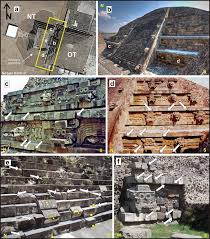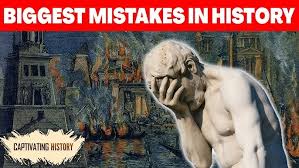Introduction
History is a fascinating tapestry of events, people, and stories that have shaped our world. However, the path to understanding history is often riddled with errors, misconceptions, and outright mistakes. Even the most diligent historians can make errors that mislead generations and shape our understanding of the past incorrectly. In this article, we will explore some of the biggest mistakes made by historians, understand their impact, and discuss how we can learn from these errors to set the record straight.
Misinterpreting Ancient Texts
The Myth of the Dark Ages
For a long time, historians referred to the period following the fall of the Roman Empire as the “Dark Ages,” a time supposedly characterized by cultural and economic decline. This term has been largely debunked, as it oversimplifies a complex era that saw significant advancements in various regions, particularly in the Islamic world.
The Rosetta Stone and Egyptian Hieroglyphs
Before the discovery and deciphering of the Rosetta Stone, historians had many misconceptions about Egyptian hieroglyphs. The stone, which features the same text in Greek, Demotic, and hieroglyphic scripts, allowed scholars to finally understand the language and correct many historical inaccuracies.
Misdated Artifacts and Civilizations
The Piltdown Man Hoax
In the early 20th century, the discovery of the Piltdown Man, purportedly the “missing link” between apes and humans, misled the scientific community for decades. It was later revealed to be a hoax, comprising human and orangutan bones. This mistake delayed the acceptance of genuine human fossils.
Misdating the Sphinx
For many years, the Great Sphinx of Giza was believed to date back to around 2500 BCE, built during the reign of Pharaoh Khafre. However, some geologists argue that the weathering patterns on the Sphinx suggest it may be much older, potentially upending our understanding of ancient Egyptian civilization.
Misunderstanding Cultural Practices
The Bloodthirsty Aztecs
Early Spanish accounts portrayed the Aztecs as excessively violent and bloodthirsty, particularly in their practices of human sacrifice. While human sacrifice was indeed part of their culture, recent studies suggest these accounts were exaggerated to justify the Spanish conquest and colonization.
The Peaceful Maya
Conversely, the Maya were long considered a peaceful civilization of astronomers and scholars. Archaeological evidence now shows that the Maya engaged in warfare, had complex political systems, and experienced significant social upheaval.
Misrepresenting Historical Figures
Christopher Columbus: Hero or Villain?
For centuries, Christopher Columbus was celebrated as the heroic explorer who “discovered” America. However, modern historians recognize the devastating impact of his voyages on indigenous populations, including enslavement and the spread of diseases.
Cleopatra: The Femme Fatale
Cleopatra VII of Egypt has often been portrayed as a seductive temptress whose beauty and cunning led to the downfall of powerful men. This characterization overshadows her political acumen, linguistic skills, and efforts to stabilize her kingdom during tumultuous times.
Overlooking Indigenous Histories
The Iroquois Confederacy
The Iroquois Confederacy, also known as the Haudenosaunee, was a sophisticated political and social system that influenced the formation of the United States government. Early historians largely overlooked this contribution, focusing instead on European perspectives.
Australian Aboriginal History
For a long time, Australian Aboriginal history was marginalized, with their cultures and achievements underrepresented in historical narratives. Recognition of their rich oral traditions, ecological knowledge, and long-standing societal structures is crucial for a comprehensive understanding of history.
Also Read These Smart Home Gadgets Will Do the Work While You Relax
The Impact of Eurocentrism
The African Kingdoms
Eurocentric historical perspectives often overshadowed the achievements of African civilizations, such as the Kingdom of Mali, the Great Zimbabwe, and the Kingdom of Kush. These societies were advanced, with complex political systems, trade networks, and cultural contributions.
The Silk Road
While the Silk Road is often highlighted for its role in connecting Europe and Asia, the contributions of Central Asian and Middle Eastern civilizations along this trade route have frequently been underemphasized.
Misattributed Inventions and Discoveries
The Invention of the Printing Press
Johannes Gutenberg is often credited with inventing the printing press in the 15th century. However, movable type printing was independently developed in China by Bi Sheng in the 11th century. Recognizing this helps paint a more accurate picture of global technological advancements.
The Discovery of America
Christopher Columbus is commonly credited with “discovering” America in 1492. However, evidence shows that Viking explorers, such as Leif Erikson, reached North America centuries earlier. Additionally, indigenous peoples had been living there long before any European arrival.
Misguided Medical Practices
Bloodletting
For centuries, bloodletting was a common medical practice believed to cure various ailments by balancing bodily humors. This practice, promoted by influential figures like Galen, was actually harmful and based on misunderstandings of human physiology.
Trepanation
Trepanation, or drilling holes into the skull, was practiced in various ancient cultures as a treatment for ailments ranging from headaches to mental disorders. Modern medicine has debunked this as a valid treatment, though it provides insight into early surgical practices.
The Consequences of Political Bias
The Soviet Union’s Historical Revisionism
During the Soviet era, the government heavily controlled historical narratives, erasing or altering facts to fit the Communist ideology. This included downplaying the role of certain individuals and events, leading to a skewed understanding of Russian and global history.
The Whitewashing of Colonial Histories
Colonial powers often presented their histories as benevolent and civilizing, ignoring the exploitation, violence, and resistance faced by colonized peoples. Revisiting these histories with a critical eye reveals a more accurate and complex picture.
The Misinterpretation of Ancient Structures

Stonehenge
For years, Stonehenge was believed to be a Druid temple. Archaeological research has since shown that it predates the Druids by thousands of years, with its true purpose still a subject of study and debate.
The Nazca Lines
The Nazca Lines in Peru were initially thought to be simple pathways or irrigation channels. It is now understood that they are massive geoglyphs created by the Nazca culture, likely for ceremonial or astronomical purposes.
The Role of Technological Advancements in Correcting Mistakes
Radiocarbon Dating
The development of radiocarbon dating revolutionized archaeology by providing a more accurate method for dating ancient artifacts. This has corrected many previous chronological errors and refined our understanding of historical timelines.
DNA Analysis
Advancements in DNA analysis have allowed historians to trace human migrations, understand genetic relationships, and even identify historical figures from ancient remains. This technology continues to shed new light on historical narratives.
The Importance of Diverse Perspectives
Also Read The Most Amazing Food Experiences Around the Globe
Women’s History
For much of history, the contributions of women were overlooked or minimized. The rise of feminist historiography has highlighted the significant roles women played in various societies, challenging traditional narratives.
LGBTQ+ History
LGBTQ+ histories have often been erased or ignored. Modern historians are working to uncover and acknowledge the lives and contributions of LGBTQ+ individuals throughout history, providing a more inclusive understanding of the past.
Correcting Historical Mistakes
The Role of Historians
Historians play a crucial role in continuously revisiting and re-evaluating past events. By critically analyzing sources, acknowledging biases, and incorporating new evidence, they help to correct mistakes and present a more accurate historical record.
The Role of Education
Educators also play a vital role in correcting historical mistakes. By teaching history through a critical lens and encouraging students to question and research, they foster a deeper and more nuanced understanding of the past.
Conclusion
History is a complex and ever-evolving field of study. Mistakes, misconceptions, and biases are inevitable, but they provide opportunities for growth and learning. By acknowledging and correcting these errors, we can develop a more accurate and inclusive understanding of the past. Setting the record straight is not just about rectifying mistakes; it’s about continuously striving for truth and fostering a greater appreciation for the rich tapestry of human history.
FAQs
1. Why is it important to correct historical mistakes?
Correcting historical mistakes is important for developing an accurate understanding of the past, fostering critical thinking, and ensuring that diverse perspectives are represented.
2. How do technological advancements help historians correct mistakes?
Technological advancements, such as radiocarbon dating and DNA analysis, provide more accurate data and evidence, allowing historians to refine timelines and understand historical events better.
3. What is Eurocentrism, and how has it affected historical narratives?
Eurocentrism is the tendency to view history from a European perspective, often overshadowing the achievements and contributions of other cultures. It has led to a skewed understanding of global history.
4. How can educators help correct historical mistakes?
Educators can help correct historical mistakes by teaching history through a critical lens, encouraging research, and presenting diverse perspectives to provide a more nuanced understanding of the past.
5. What is the significance of acknowledging indigenous histories?
Acknowledging indigenous histories is significant because it provides a more comprehensive understanding of history, recognizes the contributions and experiences of indigenous peoples, and fosters respect for diverse cultures.


